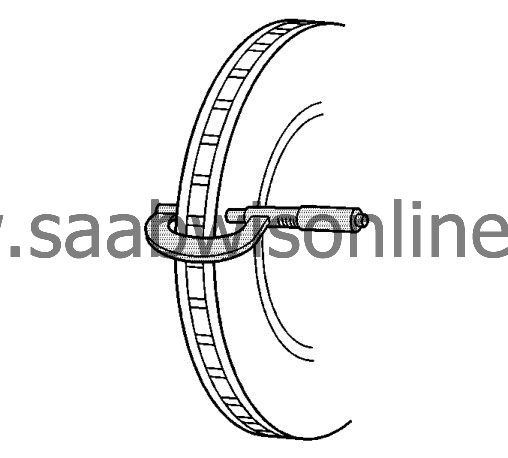Brake Rotor Surface and Wear Inspection
|
|
Brake Rotor Surface and Wear Inspection
|
Refer to
Brake Dust Warning
.
|
2.
|
Clean the friction surfaces of the brake rotor with denatured alcohol, or an equivalent approved brake cleaner.
|
|
3.
|
Inspect the friction surfaces of the brake rotor for the following Braking Surface Conditions:
|
|
|
•
|
Heavy rust and/or pitting
Light surface rust can be removed with an abrasive disc. Heavy surface rust and/or pitting must be removed by refinishing the rotor.
|
|
|
•
|
Cracks and/or heat spots
|
|
|
•
|
Excessive blueing discoloration
|
|
4.
|
If the friction surfaces of the brake rotor exhibit one or more of the Braking Surface Conditions, the rotor requires refinishing or replacement.
|
|
5.
|
Using a micrometer calibrated in thousandths-of-a-millimeter, or ten-thousandths-of-an-inch, measure and record the scoring depth of any grooves present on the rotor friction surfaces.

|
|
6.
|
Compare the groove scoring depth recorded to the following specification:
Specification
Brake rotor maximum allowable scoring: 1.50 mm (0.059 in)
|
|
7.
|
If the brake rotor scoring depth exceeds the specification, or if an excessive amount of scoring is present, the rotor requires refinishing or replacement.
|



